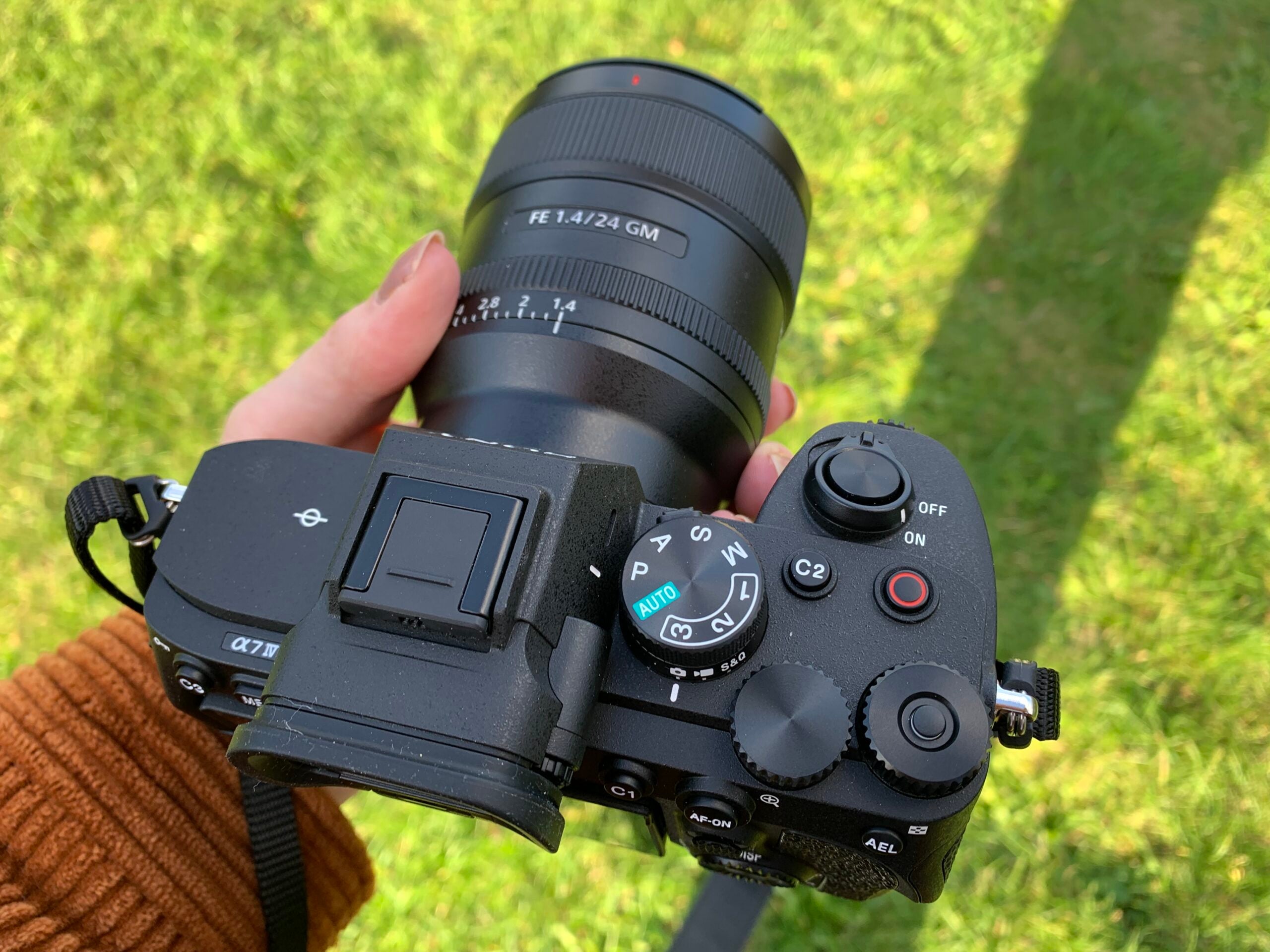
The GH5 felt like a revolutionary product, but GH5 II is a more incremental update. Panasonic has left the bulk of the camera virtually untouched; only the addition of wireless live streaming feels like a significant upgrade. That being said, the new model is just as impressive a video camera as the original, and the few quality-of-life tweaks and minor performance bumps make it another really strong choice, particularly for content creators and vloggers in need of a first “serious” camera.
Pros
- Superb video quality and options
- Excellent handling and build quality
- Wireless live streaming
Cons
- A minor upgrade over the GH5
- Not the strongest stills performer
Availability
- UKRRP: £1499
- USARRP: $1697
- CanadaRRP: CA$2149
- AustraliaRRP: AU$2699
Key Features
-
Excellent video specs4K/60fps, 1080p/180fps recording options -
Streaming skillsRTMP/RTMPS wireless live streaming -
Sensor20.3MP Live MOS sensor with AR coating
Introduction
The Panasonic GH5 II is the follow-up to the GH5, but this is more a gentle development than a radical overhaul.
Launched back in 2017, the Panasonic Lumix GH5 made quite a splash. Built to deliver class-leading 4K video and strong 20.3-megapixel stills at a time when few mirrorless models were capable of doing both, it was considered a pioneering hybrid model, excellent value for money, and one of the best 4K cameras on the market.
So here we are four years on, with Panasonic delivering its sequel – at a time when impressive 4K cameras are everywhere.
Panasonic moots the addition of wireless video streaming as a major feature, but other changes and improvements are more subtle. Still, if it ain’t broke…
Design and handling
- Very similar visually to the older model
- Control layout remains unchanged
- Plenty of connectivity options
You’ll have to look very closely to tell the GH5 II apart from its predecessor.
It’s exactly the same shape, size and weight (okay, so it’s 2g heavier – but who can tell?) as the GH5. It comes with the same magnesium alloy body and weather sealing, too, allowing it to be used in wet or dusty conditions. It’s a sturdy, solidly built camera with a traditional DSLR-style shape that sits comfortably in the user’s hands.
Panasonic has made the right decision to leave the design and control layout unchanged. The GH5 II, like the original, puts all the major buttons and dials within easy reach of the user’s fingers and thumbs. The large red video stop/start button is located in a prominent spot, while the mode and shooting type dials are pleasingly chunky.
On the back, a rubberised thumb-stick allows easy navigation of the on-screen menus or the movement of an autofocus spot, and you can also use the touchscreen to change certain settings. Overall, it’s a traditional, non-adventurous setup then, but it works well and I never found myself flummoxed when trying to change a setting in order to get the shot we were after.
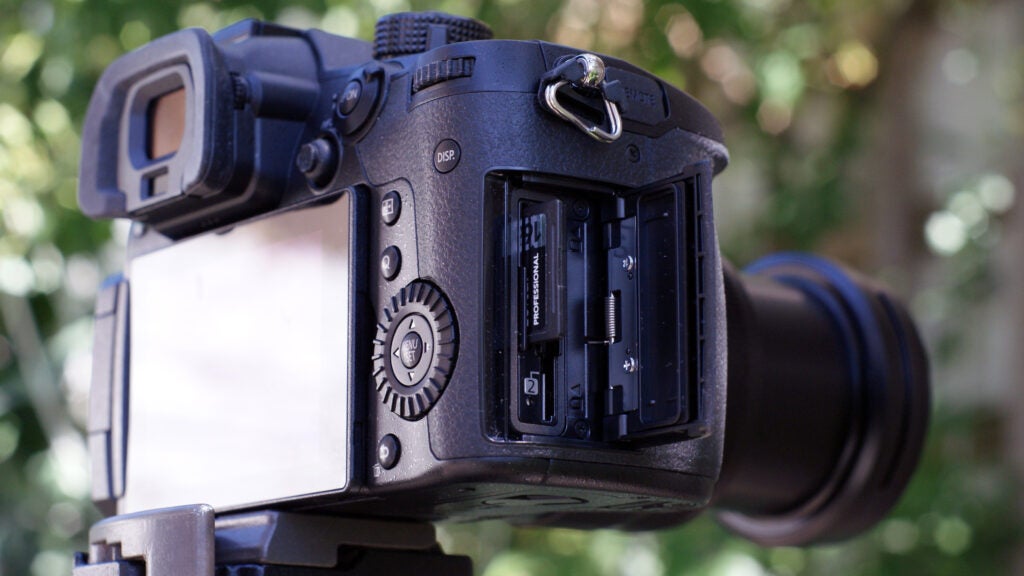
The 3-inch screen has a flexible vari-angle design, allowing it to face in almost any direction – including towards the front of the camera. For a model aimed at vloggers and video makers, that’s super-useful.
The OLED viewfinder offers an alternative that’s especially handy on sunny days, when glare makes it difficult to see the screen; it has a selectable 60/120fps refresh rate, too, if you want to make it as lag-free as possible.
Connectivity is a strong point, too. The camera’s USB-C 3.1 connection has been improved over that of its predecessor, and it’s now able to supply constant power or internally charge the battery. Again, that will be particularly welcome news to video makers.
As with the GH5, there’s also a full-size HDMI socket (able to transport a 4:2:2 10-bit video feed to an external recorder), headphone and mic jacks, and a remote trigger port. Bluetooth 4.2 and 5GHz Wi-Fi are also aboard, and essential for the wireless streaming setup (more on that below). Storage comes courtesy of dual SD card slots.
Features and performance
- Live streaming options
- Improved AI-based tracking
- Battery life remains very much the same as the older model
If we’re talking only about brand-new features, live streaming is the GH5 II’s star turn.
Panasonic has been keen to stress that it sees live streaming as a major trend with huge potential in the coming years, so it’s apparently trying to get its foot in the door early.
RTMP/RTMPS functionality allows you to set up a stream on a wide variety of platforms, but those who want to get going right away can use the built-in Facebook and YouTube functionality.
Streaming is all done through Panasonic’s Lumix Sync mobile app, and involves pairing the GH5 II with your phone and an appropriate Wi-Fi network (which can be your phone’s Wi-Fi hotspot).
You then sign in to your Facebook or YouTube account, select settings such as quality and privacy, and hit a big red button on your phone’s screen to start.
You don’t have access to the GH5 II’s formidable full range of video settings when streaming. The maximum quality is 1080p/60fps, and this will automatically downgrade if your connection isn’t top-notch (during a live stream test using a phone’s 4G hotspot, the stream quality dropped to 720p).
Still, that’s acceptable for live streaming, and the image quality on both YouTube and Facebook looks quite engaging. There’s a lag between your actions and the stream – but that, too, is something that’s quite easy to live with.
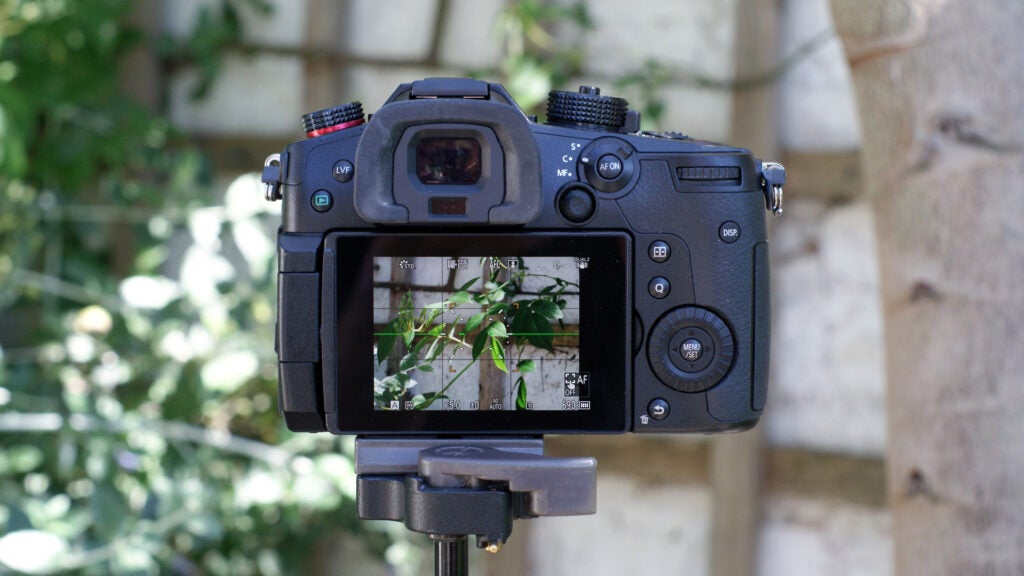
You might wonder about wired live streaming – after all, if you’re streaming from home then you’re probably close to a computer. Panasonic says this is coming via a future firmware update, which will also allow you to tether the camera to a smartphone for streaming.
The GH5 II’s autofocus setup uses the same DFD (depth from defocus) contrast-based system as most of Panasonic’s cameras, and remains largely unchanged from the GH5. It has 225 focus points and a wide range of modes to choose from, including object tracking. While not as fast nor reliable as the hybrid system on, say, the Sony A7S III, everything works well enough here – I didn’t experience any issues getting the camera to focus on the desired object, and never missed a shot through a misfocus.
There are some minor improvements here as well: it now has AI-based head, body and animal recognition, where the GH5 only had eye recognition. This almost always works (you can tell when it’s doing so because the preview will show a box around the object) – but, occasionally, it will fail to spot an animal. With human subjects, it’s extremely reliable.
The GH5 II has a slightly larger-capacity battery compared to the GH5, but overall battery life remains about the same. You can expect to take about 400 photos on a single charge, or record about an hour of 4K video – which seems fine to us. If you’re into recording long videos, you can use the USB-C power supply option, or just stock up on extra batteries.
Image quality
- 20.3-megapixel Micro Four Thirds sensor
- Shines when it comes to video
The GH5 II uses a similar sensor to the original. It’s a 20.3-megapixel Micro Four Thirds sensor, and the only difference seems to be the addition of an anti-reflective design to minimise flare from bright lights. As such, performance is largely on a par with the GH5 – which is to say it’s decent.
Image quality is fairly impressive considering the physically small size of the sensor. Details are sharp and colours clean in optimal lighting conditions, only starting to become more noticeably grainy and speckled as you push the ISO towards its upper limits (it can go all the way to 25,600 in extended mode).
Still, if you’re primarily a stills photographer, I would suggest a camera with a larger full-frame or APS-C sensor.
Speed-wise, the GH5 II can continuously shoot full-resolution images at around 12fps until its buffer fills up; you’ll just have to turn off live view and autofocus. With everything on, it’s about 9fps. However, for those in need of speedier stills, the 6K and 4K Photo modes work wonders.
Essentially freeze-frames from a video, these images are lower resolution than standard shots (and compressed JPEGs – no RAW shooting here) but can be captured in very quick bursts: 30fps for 6K and 60fps for 4K.
The GH5 II is a solid stills camera, but video is where it shines. While rivals such as Sony and Canon have come on in leaps and bounds with their releases since the original GH5 arrived, it was a landmark camera for 4K video at the time.
The GH5 II continues in the same vein; it doesn’t really add anything of major importance, however – and I suspect the real advances may come along with the GH6, which has been announced by Panasonic and is due to go on sale later in 2021.


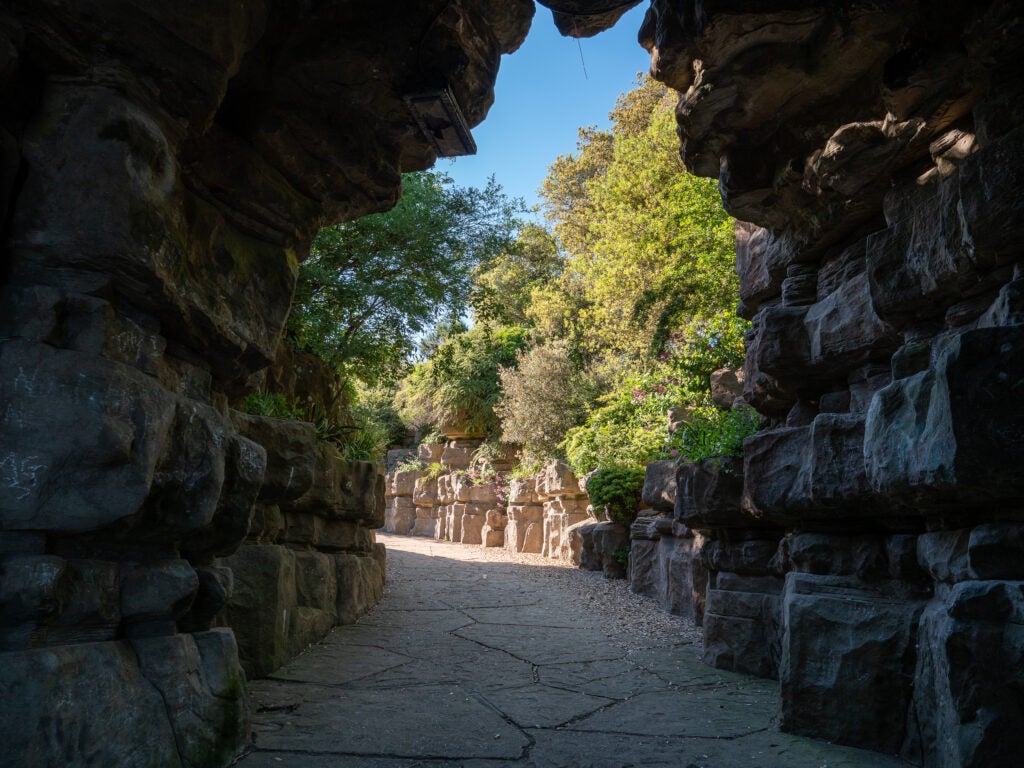
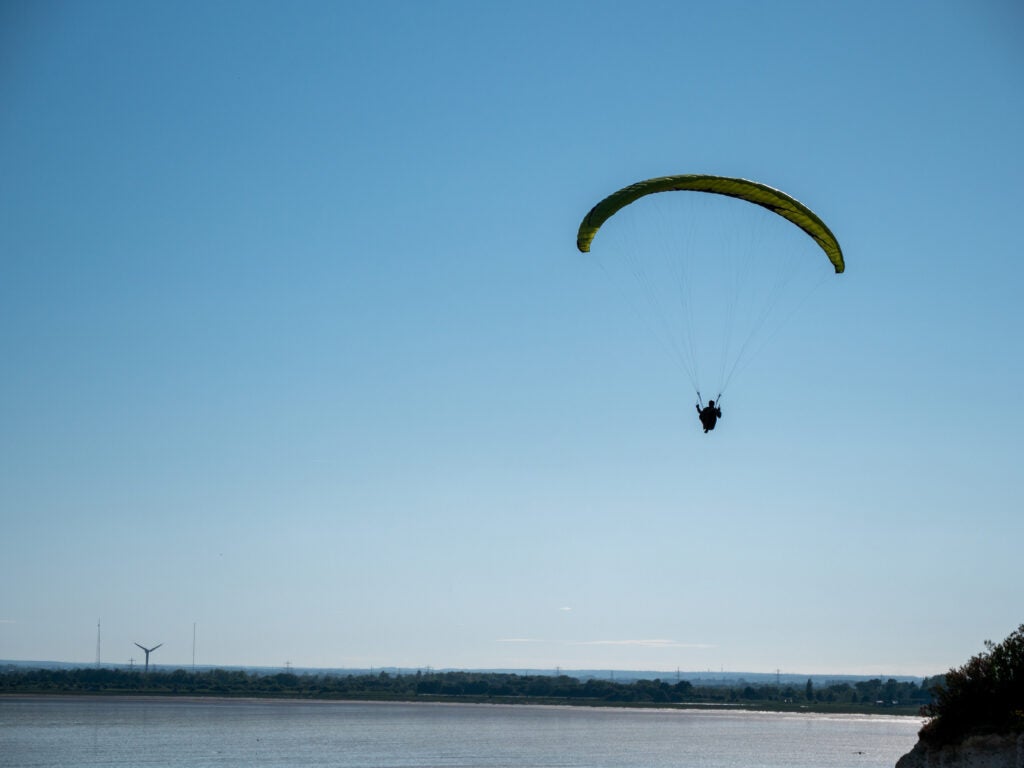
That being said, what you do get here on the video front is extremely dependable and consistently impressive.
The camera can record in a wide variety of formats, resolutions, bit rates and frame rates – and whatever type of filmmaker you are, you’ll likely find something to suit your needs. From ultra-clean 10-bit C4K (there’s an anamorphic 6K option, too) that exhibits realistic, subtle colour details and beautiful clarity, to buttery-smooth 180fps slow-motion 1080p, there’s a dizzying array of options.
With Hybrid Log Gamma and V-Log available as picture profiles during recording, the camera can produce footage that suits professional workflows and colour grading – but it’s also worth pointing out that videos look good right out of the camera. The dual image stabilisation helps make handheld footage less shaky (all our sample clips were recorded handheld) and has been slightly improved over the similar system on the GH5.
Best Offers
Should you buy it?
You want a compact, lightweight and relatively affordable mirrorless camera The GH5 II can capture seriously good-looking 4K video footage. It has so much to offer filmmakers taking their first steps into 4K, all while being pleasingly simple to operate and easy to live with.
You own the original GH5 and are expecting its replacement to represent a major upgrade While there are small performance and quality-of-life tweaks here and there, the core video and photo performance hasn’t changed much. Likewise, if you’re primarily a stills photographer, a full-frame or APS-C camera might make more sense.
Final thoughts
The GH5 II isn’t a huge leap forward over its four-year-old predecessor (wireless streaming aficionados may disagree), but it’s undeniably a better overall camera. Panasonic’s tweaks have ironed out some of the original’s kinks and made small improvements to performance, and given that the price hasn’t risen, it’s still a great buy for the money.
Anyone looking for a flexible and high-performance 4K camera for the purposes of content creation, vlogging, live streaming and even serious filmmaking will find plenty to admire and explore here. With effective image stabilisation, decent autofocus, comfortable handling and good connectivity, it’s the perfect tool for aspiring videographers. It isn’t at all bad at stills photography, either.
How we test
We test every camera we review thoroughly over an extended period of time. We’ll always tell you what we find. We never, ever, accept money to review a product.
FAQs
Yes, there are two card slots here
The GH5 II has a 20.3MP Live MOS sensor with AR coating
Yes, tbere’s an OLED viewfinder with 3.68m dots
Specs
The post Panasonic GH5 II appeared first on Trusted Reviews.
Author: Sam Kieldsen
This article comes from Trusted Reviews and can be read on the original site.
